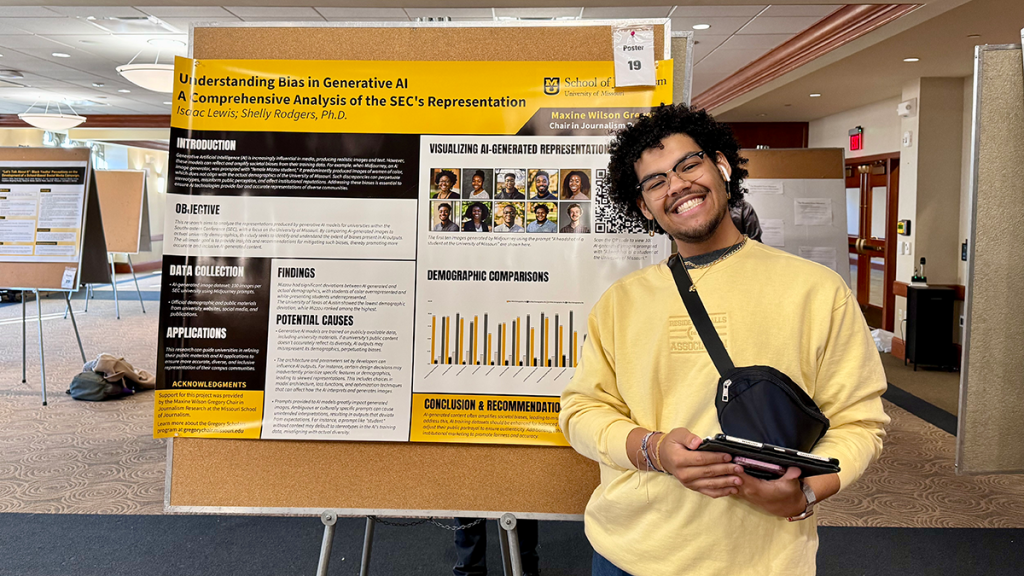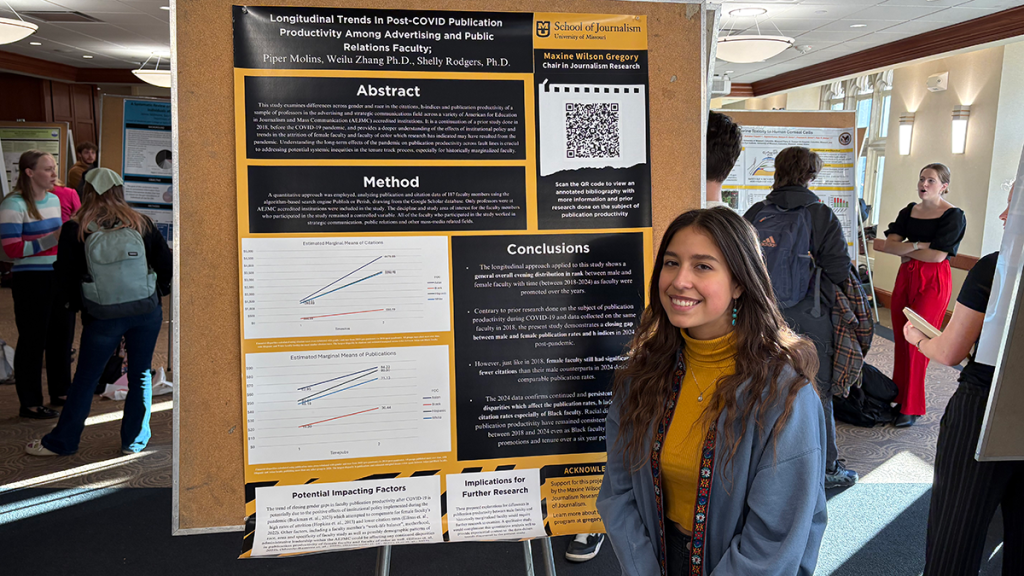Understanding Bias in Generative AI: A Comprehensive Analysis of the SEC’s Representation
Isaac Lewis and Shelly Rodgers, Ph.D.

Photo of Isaac Lewis
Abstract: This research proposal investigates bias in generative AI models, focusing on portrayals of the University of Missouri (Mizzou) in comparison to 15 other universities within the Southeastern Conference (SEC). Initially prompted by a personal observation—where Midjourney, an AI image generator, predominantly depicted women of color when given “female Mizzou student” as a prompt—this study expands the analysis with prompts such as “A headshot of a student at the University of BLANK,” applied across all SEC institutions. Using a dataset of 100 AI-generated images per university, we aim to analyze discrepancies between these portrayals and the actual demographics and public representations of each institution. This research will identify patterns of bias within generative AI outputs, examine potential causes behind these representations, and offer recommendations for reducing bias in AI-generated content, enhancing both accuracy and inclusivity in the depiction of universities.
How Award-Winning Advertising Campaigns Present African Americans
Kaiya Lynch and Shelly Rodgers, Ph.D.

Photo of Kaiya Lynch
Abstract: Research demonstrates that the most common form of advertising consumption is digital advertising (with the second most-frequented form being TV and streaming services). This advertising format has existed for 83 years and—even in current times—has been subject to criticism due to portraying harmful messages and stereotypes. In an interest of seeing if advertising campaigns have evolved to include more accurate and stereotype-free portrayals of people of color (with a focus on African Americans), my research studies the representation of African Americans in five advertising campaigns that have placed at the American Advertising Awards. Results have determined that by attempting to include more representation, the advertising campaigns appear to be overcompensating by including portrayals of typically underrepresented subgroups and excluding variety in the representation. Further analysis has found that by including African Americans to their campaigns, advertising agencies did not put as much care and research into minority placement as they should have, leading to negative stereotypes being perpetuated.
Longitudinal Trends In Post-COVID Publication Productivity Among Advertising and Public Relations Faculty
Piper Molins, Weilu Zhang Ph.D., and Shelly Rodgers, Ph.D.

Photo of Piper Molins
Abstract: This study examines differences across gender and race in the citations, h-indices and publication productivity of a sample of professors in the advertising and strategic communications field across a variety of American for Education in Journalism and Mass Communication (AEJMC) accredited institutions. It is a continuation of a prior study done in 2018, before the COVID-19 pandemic, and provides a deeper understanding of the effects of institutional policy and trends in the attrition of female faculty and faculty of color which research has indicated may have resulted from the pandemic. Understanding the long-term effects of the pandemic on publication productivity across fault lines is crucial to addressing potential systemic inequities in the tenure track process, especially for historically marginalized faculty. A quantitative approach was employed, analyzing publication and citation data of 187 faculty members using the algorithm-based search engine Publish or Perish, drawing from the Google Scholar database.